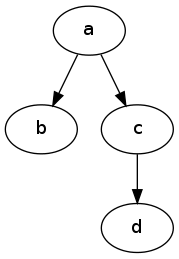I was reminded of “Unrealistic Expectations,” no, sorry, that was “Great Expectations” (Dickens) when I read: Fixing Healthcare with Big Data
Robert Gelber writes:
Yesterday, Roger Foster, the Senior Director for DRC’s technologies group, discussed the immense expenses of the U.S. healthcare system. The 2.6 trillion dollar market is ripe for new efficiencies reducing overall costs and improving public health. He believes these enhancements can be achieved with the help of big data.
…
Foster set forth a six-part approach aimed at reducing costs and improving patient outcomes using big data.
It would have been more correct to say Foster is “selling big data as the basis for these enhancements.”
Consider his six part plan:
Unwarranted use
Many healthcare providers focus on a fee-for-service model, which promotes recurring medical visits at higher rates. Instead, big data analytics could help generate a model that implements a performance-based payment method.
Did you notice the use of “could” in the first approach? The current service model developed in the absence of “big data.” But Foster would have us create big data analytics of healthcare in hopes a new model will suddenly appear. Not real likely.
Fraud waste & abuse
Criminal organizations defraud Centers for Medicare and Medicaid Services (CMS) by charging for services never rendered. Using big data analytics, these individuals could be tracked much faster through the employment of outlier algorithms.
Here I think “criminal organizations” is a synonym for dishonest doctors and hospitals. Hardly takes big data analytics and outlier algorithms to know one doctor cannot read several hundred x-rays day after day.
Administrative costs
The departments of Veterans Affairs (VA), Military Heath System (MHS) and others suffer high costs due to administrative inefficiencies in billing and medical records management. By updating billing systems and employing big data records management, facilities could spend less time working on bookkeeping and more time providing accurate information to doctors and physicians assistants.
Really? Perhaps Foster could consult the VA Data Repository and get back to us on that.
Provider inefficiencies
A wide implementation of clinical decision systems could reduce errors and increase congruency among various healthcare providers. Such systems could also predict risks based on population data.
Does that sound like more, not less, IT overhead to you?
Lack of coordinated care
The process of sharing medical data across institutions has become cumbersome resulting in redundant information and added costs. Improved sharing of information would open systems up to predictive modeling and also allow patients to view their history. This would allow the patient to have greater control in their treatment.
How much “added costs” versus the cost of predictive modeling? Sounds like we are going to create “big data” and then manage it to save money. That went by a little fast for me.
Preventable conditions
Through the use of big data, healthcare providers can track the change in behavior of patients after treatment. Using this data, medical professionals can better educate patients of the resulting effects from their behavior.
Is it a comfort that we are viewed as ignorant rather than making poor choices? What if despite tracking and education we don’t change our behavior? Sounds like someone is getting ready to insist that we change.
Foster is confident that big data will answer pressing issues in the healthcare as long as solutions are deployed properly.
That last sentence sums up my problem with Foster’s position. “Big data” is the answer, so long as you understand the problem correctly.
“Big data” has a lot of promise, but we need understand the problems at hand before choosing solutions.
Let’s avoid “Unrealistic Expectations.”
